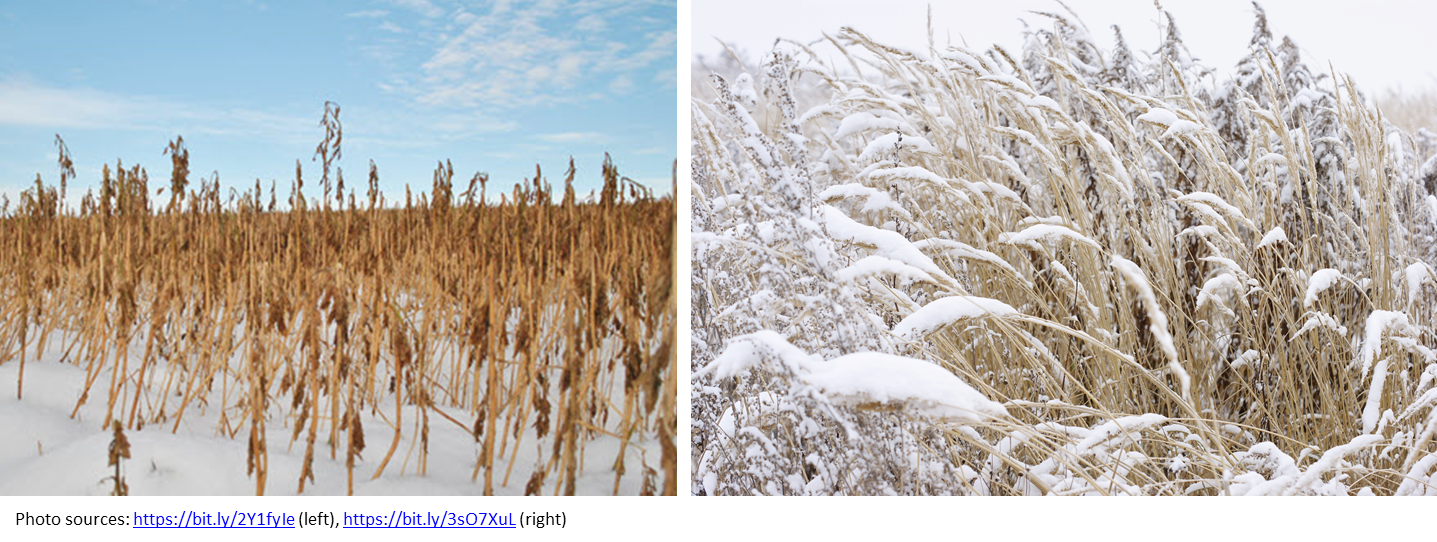Many parts of the Canadian prairies are abnormally dry this year (1), as are many parts of the Northern USA and Midwest (2). With below average winter precipitation in much of western Canada and the United States over the last few months and a dry forecast for the spring, soil moisture is on growers’ minds. This is a perfect time to talk about the effects of dryness on your crop/soil and how it affects not only your crop directly, but also the microbial life in the soil. On this week’s growing possibilities, it’s time to talk how drought and dryness affects the microbes that help your crop reach its fullest potential.
Dry conditions going into this growing season, as well as the dry conditions we have seen in the recent past for many places, can have lasting effects on crop acres that can be felt for years to come. Dry soil can take at least two years to recover to normal conditions. In one study in the American Midwest, soil dryness persisted to a depth of 5 feet after a drought, with some plants needing to extend roots to 8 feet below ground to reach suitable moisture (3). On average, one foot of soil holds two inches of water, therefore 8 feet of dry soil requires 16 inches of moisture to become recharged without factoring in runoff, evaporation and the time this moisture needs to penetrate the soil.
Winter precipitation has been below average on the prairies this year, with less winter precipitation also having an effect on spring soil conditions. One foot of snowfall is equal to approximately one inch of rainfall, so it takes a lot of snow to mitigate dry soil from the previous year when spring rolls around (3). Prevailing dry weather conditions without moisture to counteract it will not only result in dry soil, in fact low-moisture soil will heat up faster, and when coupled with low relative humidity field temperatures begin to climb higher much quicker when the warm season approaches (4).
Soil moisture is a major concern for any grower, but what is often overlooked is the effect that low moisture and high temperatures can have on the helpful microbe populations in your fields which in turn helps in soil mineralization or soil nutrient availability.
Nitrogen (N) fixing rhizobia, the bacteria responsible for forming root nodules on legume crops, prefer moist conditions with a soil temperature range of 40-80°F (4-27°C). When soils get too hot or too dry, the rhizobia can quickly perish. Those that do survive will likely have a reduced capacity for nitrogen fixation, greatly decreasing the effectiveness of this population for nodule formation in the next crop (5). In addition to a lack of moisture and excess heat, dry & cracked soil can also expose microbes to harmful UV rays from the sun, further diminishing the population of effective microbes in the soil.
So how do you counteract the negative effects dry weather can have on your soil microbe population?
Utilising cover crops throughout the year in your field is a tried and true method of keeping your soil healthy for the growing season. Fields with cover crops have better organic matter levels than those left uncovered and retain a higher water holding capacity (6). This helps to offset the water loss due to increased heat and decreased precipitation. Higher organic matter levels in soil are also essential for feeding bacterial and fungal microbial life in the soil and keeping helpful microbes ready for the next crop. Replenishing the microbial life in your soil may also help regain soil health following drought conditions. Inoculating your legume crops with N-fixing rhizobia every year is a sure way to maximize nodulation and ensure rhizobial populations in your soil are healthy and abundant. Relying on rhizobia populations already present in your soil is often not enough to give good nodulation even in a normal year, this is even more so during times of drought.
References:
- https://www.agr.gc.ca/eng/agriculture-and-the-environment/drought-watch/canadian-drought-monitor/?id=1463575104513
- https://droughtmonitor.unl.edu/
- http://munews.missouri.edu/news-releases/2013/0211-midwest-soil-could-take-up-to-two-years-to-recover-from-long-drought-says-mu-researcher/
- https://www.realagriculture.com/2021/01/the-good-the-bad-and-potentially-ugly-weather-for-western-canada/
- https://agcrops.osu.edu/newsletters/2012/26
- https://www.realagriculture.com/2020/12/soil-school-putting-a-value-on-cover-crops-and-soil-health/


